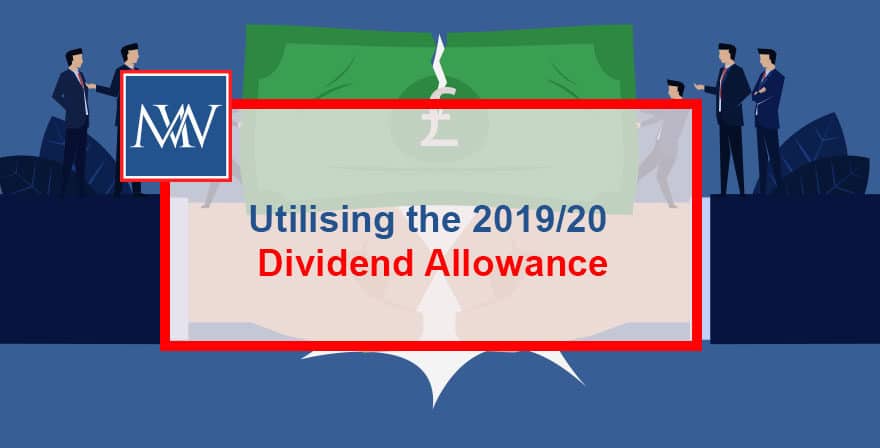
Utilising the 2019/20 dividend allowance
The dividend allowance is quite unusual in that it is available to everyone and everyone has the same allowance. For 2019/20 the allowance is set at £2,000. In common with many allowances, it is a case of use it or loses it.
As the end of the 2019/20 tax year draws closer, what can be done to ensure that the allowance is not wasted?
Nature of the allowance
Although termed the ‘dividend allowance’ its nature is really that of a nil rate band. Dividends which are sheltered by the allowance form part of band earnings, but the dividends that fall within that band are taxed at a zero rate.
Example
Harriet is a basic rate taxpayer. After taking account of her salary, she has £10,000 of her basic rate band remaining. She receives dividend income of £3,000.
The first £2,000 of her dividend income is covered by her dividend allowance and is tax-free. The remaining £1,000 is taxed at the dividend ordinary rate of 7.5%.
Harriet must, therefore, pay a tax of £75 on her dividends.
The dividend income uses up £3,000 of her remaining basic rate band.
Family companies
In a family company scenario, it is possible to organise the shareholdings so as to spread the dividend income around the family to reduce the combined tax bill and to take advantage of each member’s dividend allowance. This is particularly useful where the family member has no other shares and the allowance would otherwise be lost.
As dividends must be declared in proportion to shareholdings, the use of an alphabet share structure, whereby each person has their own class of share (e.g. A ordinary shares, B ordinary shares, etc.) preserves the flexibility to tailor dividend payments to shareholder’s circumstances.
Example
Andrew is the sole director of A Ltd. In 2019/20 the company has profits of £70,000 which Andrew wishes to withdraw as dividends. His wife Anne and his children Beth, Chris, Dawn and Emma all work outside the business. None has any other income from shares.
Andrew also pays himself a salary of £8,628.
To make use of each family member’s dividend allowance, an alphabet share structure is used, under which A ordinary shares are allocated to Anne, B ordinary shares are allocated to Beth, C ordinary shares are allocated to Chris, and so on.
Each family member receives a dividend of £2,000. As this is sheltered by their dividend allowances, this enables £10,000 of dividends to be paid tax-free. Had Andrew received the dividends paid to family members, they would have been taxed at the dividend higher rate of 32.5%.
Making use of the family’s dividend allowances reduces the overall tax bill by £3,250.
Other opportunities
Where one spouse or civil partner has substantial shareholdings and their partner does not hold any shares (with the result that their dividend allowance is unused) the shareholding partner could consider transferring shares to their spouse/civil partner (taking advantage of the ability to transfer the shares for capital gains tax purposes on a no gain/no loss basis). This will shift dividend income from one spouse/civil partner to the other and enable dividends that would otherwise be taxed to be received tax-free.
Taxpayers with unused dividend allowances could also discuss their investment strategy with their financial adviser with a view to exploring whether it would be beneficial to hold shares – but remember not to let the tax tail wag the dog.
For More Information, Book a Free Consultation
Need Accountancy Support?
For information on bespoke training, or if you have any other questions for Makesworth Accountant, please fill in your details below
















 151
151